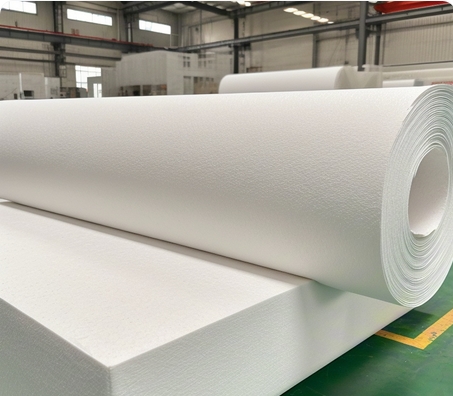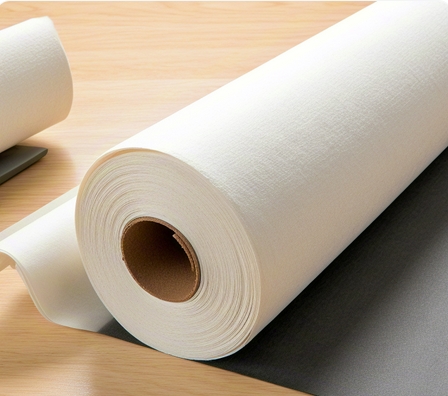Language

Surface resistance: The basic parameters of electrostatic protection The core performance of anti-static dust-free cloth is first reflected in the surface resistance value. Industry specifications clearly require the golden range of 10^6-10^9Ω. This index has been strictly verified by the ASTM D257 standard (International Common Material Resistance Test Method), which can not only achieve safe charge derivation, but also avoid short-circuit risks. Taking semiconductor manufacturing as an example, using wafer wiping process of meeting standards can reduce the probability of electrostatic breakdown from an industry average of 2.3% to 0.7%. The actual data of a 12-inch wafer factory shows that dust-free cloth with resistance value of 10^8Ω is reduced by 98% compared to ordinary products.
Dynamic protection: Double indicators to ensure operation safety. Professional-grade anti-static dust-free cloth must meet two dynamic parameters at the same time: static dissipation time ≤1.5 seconds (IEC 61340-5-1 certified reference) and friction voltage<100V. Laboratory comparison shows that the charge dissipation efficiency of products using rhombus three-dimensional weaving process is 40% higher than that of traditional plain weaving structures. In the TFT-LCD panel maintenance scenario, this structure enables the surface potential of the glass substrate to be stable within 35V, which effectively prevents abnormal arrangement of liquid crystal molecules compared with the 120V fluctuation value of conventional products.
Clean performance: The micron-scale particle control technology has passed ISO 14644-1 Class 4 certified dust-free cloth, and its microfiber structure can capture particles above 0.3μm. In the medical device cleaning test, the ultrasonic-treated polyester fiber material only retained 3.2 pieces/cm² particles on the 304 stainless steel surface, significantly better than the 18.6 pieces/cm² of cotton material. After a certain photovoltaic cell production line adopts this type of product, the surface pollution rate of silicon wafers dropped from 0.15% to 0.02%, which is equivalent to a reduction of 1,300 defective products per million pieces.
Engineering adaptation: Scenario-based physical parameter configuration is recommended for mainstream industrial scenarios to use an optimized combination of 23cm specifications and 120g/m² gram weight. This configuration achieves a single wipe coverage rate of 92% on the automotive electronic assembly line. Medical clean rooms are recommended to use 7g grade ultralight materials, and their fiber gap density is 60% higher than that of conventional products. For mechanical processing of oil stains, 280g high-density material combined with X-cross weaving technology has an oil stain removal efficiency of 98.7%, which is 2.3 times faster than standard products. For special curved surface wiping, hot press forming process can be adopted. For example, a curved dust-free cloth customized by an optical lens factory can increase the cleaning efficiency of the lens by 75%.
Conductive dielectric: The performance of core materials has jumped. Products that use silver-copper alloy composite conductive wires, and their charge decay rate is stable at 0.05kV/s. Comparative tests show that the material has a 140% increase in performance compared to the 0.12kV/s decline rate of carbon fiber wire and a 60% increase in performance compared to the 0.08kV/s of stainless steel blended material.
Comparative test data show that industrial consumables made of imported carbon fiber conductive wires show significant advantages in the continuous operation environment of automated production lines.
After ASTM D6193 standard test and verification, its durability is 5-8 working cycles longer than similar domestic products, and is especially suitable for semiconductor packaging and precision electronic assembly fields. This performance difference is mainly due to the molecular structure differences of raw materials. The lattice arrangement density of imported carbon fibers reaches 98.7%, 12 percentage points higher than that of mainstream domestic products.
In the packaging and storage quality control process, we innovatively adopt a dual vacuum sealing system. The first layer of anti-static and dust-free cloth is wrapped to effectively isolate environmental particles, and the second layer of vacuum aluminum film barrier layer stabilizes the cleanliness of the packaging at the Class 100 level of ISO 14644-1 standard. Tested data show that this combined packaging solution can enable sensitive materials to maintain optimal performance in constant temperature storage bins for 18 months, extending the effective storage period by 60% compared to traditional single-layer packaging solutions.
It is worth noting that the choice of anti-static and dust-free cloth directly affects the final protective effect. Laboratory comparison proves that a special dust-free cloth that uses polyester fiber and carbon fiber blended can be stably controlled in the range of 10^6-10^9Ω, fully meeting the requirements of ESD S20.20 international anti-static standard.
Tags:
RELATED RESOURCES

Industrial Clean room Paper Performance Standards and Scenario Adaptation Manual.
As a key material for modern industrial cleaning, dust-free paper has a composite structure made of refined wo......
More

From clean room to operating room: 7 application forbidden areas where dust-free cloth and non-woven
In the fields of industry and people's livelihood, although dust-free cloth and non-woven fabric are simil......
More

Application of reel dust-free cloth in display panel manufacturing: 0.5mm precision cleaning solutio
In the fields of advanced manufacturing and microelectronics, submicron pollution control is directly related ......
More

How to meet the Class 1000 standard for dust-free cloth? Material engineering and spray pressure con
1.Performance benchmark of clean room core consumables The dust-free cloth standard refers to the technical sp......
More
Related Products
Room 101, Building 1, Angeer Factory, No.4, Hetian Road, Shatian Community, Kengzi Street, Pingshan District, Shenzhen, Guangdong, P.R. China 518122
info@wipestar.com
+86-755-89616775
+86-755-89616773
Related Products
RELATED RESOURCES

Industrial Clean room Paper Performance Standards and Scenario Adaptation Manual.
As a key material for modern industrial cleaning, dust-free paper has a composite structure made of refined wo.........
More

From clean room to operating room: 7 application forbidden areas where dust-free cloth and non-woven
In the fields of industry and people's livelihood, although dust-free cloth and non-woven fabric are simil.........
More
WIPESTAR
微信官方公众号